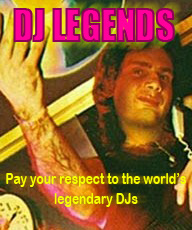Custom Filter Box
Custom Filter Box Posted on: 06.02.2012 by Birgit Gondal I'm considering building myself a little box with dedicated channel filters, completely analog, to stick in between my soundcard and my mixer. I'm changing my mixer to rotary as the faders are bleeding horrifically, and believe this would be a fun little project to do. I wanted to ask if anyone ANYWHERE had a schematic of a Xone 92 filter, or could give me some info as to what variable resistors and standard resistors are used to give it that classic A&H sound? | |
| Birgit Gondal 06.02.2012 | I'm considering building myself a little box with dedicated channel filters, completely analog, to stick in between my soundcard and my mixer. I'm changing my mixer to rotary as the faders are bleeding horrifically, and believe this would be a fun little project to do. I wanted to ask if anyone ANYWHERE had a schematic of a Xone 92 filter, or could give me some info as to what variable resistors and standard resistors are used to give it that classic A&H sound? |
| Birgit Gondal 07.02.2012 | Haha cybertrash it's been a while since i fiddled with electronics, trying to remember some of it haha, dust off my chops! I forgot all about spice RS, thanks man! I believe the next step is going to be finding out the frequency response of the A&H ones if i cant find the exact sizes of the capacitors and resistors, and basically backward calculate them. Then the tough decision of whether to have seperate high and low pass filters, or have them both on one knob... decisions, decisions! Think i'll rotary my numark POS first tbh. |
| Evelyn Navarijo 07.02.2012 | Wow, that quickly went over my head... Oh well, watching with interest |
| Joy Ringer 07.02.2012 | Even simpler than a bandpass, actually: http://www.allaboutcircuits.com/vol_2/chpt_8/2.html I'd believe you could replace Rload with a variable resistor and use 600ohm 1:1 isolation transformers or find some other way to account for the impedance of the load (probably a power amplifier). Also, not that you don't know this but maybe somebody else doesn't: SPICE is a free, absolutely invaluable tool for circuit design. I believe most computer types can get basically proficient with it in a day. rs |
| Birgit Gondal 07.02.2012 | The main problem with a crybaby circuit is that it is a band pass filter, rather than a high to low pass filter. I havent tinkered with electronics in years, since i stopped modifying guitars. would anyone give me a hint as to how i could change a band pass circuit into a high to low pass? |
| Birgit Gondal 07.02.2012 | surprisingly the circuitry regarding the standard crybaby is really simple!! |
| Joy Ringer 07.02.2012 | Awesome. As far as I know most (if not all) wah pedals use an Inductor. They do sound great and I love a lot of the "musical quirks" they add to the sound. rs |
| Birgit Gondal 07.02.2012 | I personally was looking at producing a passive filter, as the makeup gain will be in the preamp of the mixer, though i had not considered using a tube system (I have a lot of experience with guitar amplifiers) which could bring a lovely warm sound to it, with slight tube overdrive on the highpass. I was also considering looking into the circuitry regarding Wah-Wah pedals as they are extremely expressive filters, and add quite a lot of boost to the un-filtered frequencies. |
| Joy Ringer 08.02.2012 | Welcome to a very deep rabbit hole... Here's a Service Manual for the Xone 32. This will almost certainly contain the schematic but I'd check with the seller first. You might be able to find one for free but this one is cheap regardless. http://www.ebay.com/itm/Allen-Heath-...-/170724636507 I suspect A&H is using a 24dB/octave Butterworth, but once you get the schematic you'll be able to verify that. Regarding filter design, a lot of the finer points (or even major ones) have to do with the circuitry surrounding the filter itself. Within the filter: there's a fair amount of controversy over whether resistors and capacitors (the core components of HPFs and LPFs) have a significant "sound" (of course the vintage, expensive ones always have the best sound, right?) I suspect that A&H uses mostly "non-exotic" components, but because of their deep engineering expertise they have them implemented in the best possible way. There's the issue of op-amps -- but as opposed to Resistors and Capacitors there are definitely quantifiable differences here. I'd spend the extra dollar or three to go with the nice ones in this case. Personal note: My interest in DJ filters ultimately led to an interest in vintage EQ's. Before people made Resistor-Capacitor filters, Inductors (wire coils that behave similar to Resistors) were popular. My personal favorite EQ's use inductors for low-pass, matching transformers on the inputs and outputs, and are totally passive (meaning that there are no op-amps or transistors in the EQ stages, the makeup gain is made elsewhere in the circuit). This is actually the way that the most prestigious EQ/Filter: a Pultec Program EQ, is designed. The Pultec is also almost comically simple in design (though it uses some pricey components, like the I/O transformers and a tube makeup stage.) rs |
| Evelyn Navarijo 07.02.2012 | Looks like A&H used to sell "filters in a box", but it seems to be discontinued... Edit: Which seems to have come with a block diagram: |
| Lisa Lochotzki 07.02.2012 | you want the service manual. plenty places on the web sell them. their schematic is amazingly simple. often simple is better |
| Evelyn Navarijo 07.02.2012 | Without actually knowing anything, it seems to me that A&H would be rather reluctant to share what makes their filters so great... Seeing as it's a pretty big selling point. I too would love an analog filter box... I'm in love with the A&H filters, but their mixers don't really have the features I crave. |
<< Back to Reviews of DJ equipment Reply



